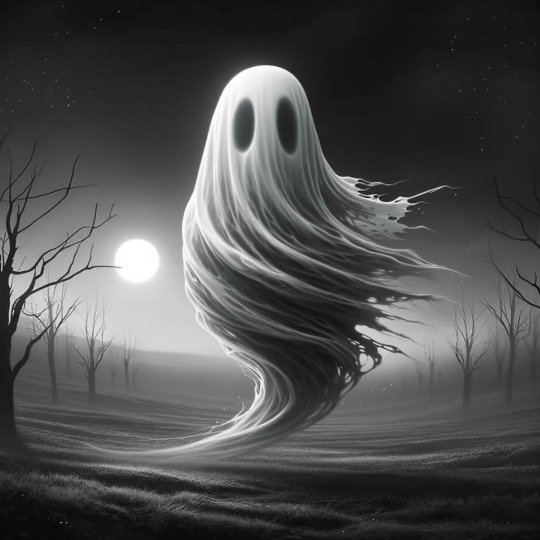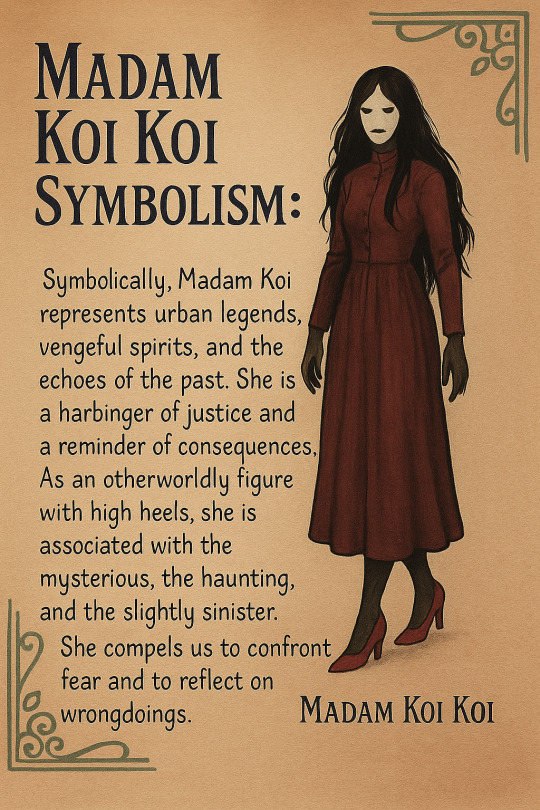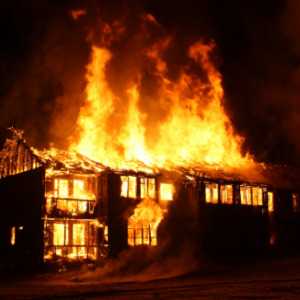Information on paranormal topics. We are all over the place.
Don't wanna be here? Send us removal request.
Text

2 notes
·
View notes
Text
Kenworthy Hall Ghost
Renowned for its magnificent Gothic Revival architecture and enigmatic ghostly stories, Kenworthy Hall, sometimes known as the Carlisle-Martin House, is a historic home in Marion, Alabama. Designed for wealthy cotton planter Edward Kenworthy Carlisle in the middle of the 19th century, the four-story tower of the home has evolved into the focal point of its spooky story. Designed as an observation point, this tower is supposed to be the scene of supernatural events connected to a terrible past incident from the house.

Usually connected to the Carlisle family, the ghost story centers on the spirit of a young woman allegedly haunting the tower. Local legend goes that she either perished inside the tower or was linked to a heart-wrenching incident involving unmet love. Particularly in twilight or on misty evenings, several guests and residents have reported witnessing her figure staring out from the windows of the tower. The apparition is said to be a pale, melancholic presence that gives the otherwise large and forceful construction a sad note.

For both historians and paranormal aficionados, Kenworthy Hall has evolved over years into a topic of obsession. While some people write off the sightings as folklore, others find great appeal in the idea of residual spirits connected to the past of the house. Now a private property, the mansion nonetheless piques interest for its architectural grandeur and the ongoing legend of the ghostly person in the tower, therefore fusing mystery with history right in the center of Alabama.
2 notes
·
View notes
Text
Funnel Ghosts: Nature, Folklore, and Science Explained
I honestly hadn't heard the term funnel ghost used before. And I have been ghost hunting for decades. And I saw the term once, and now it is appearing everywhere.
From the description:
Many different stories exist about paranormal creatures, with countless spectral events documented over millennia and across civilizations. Among these enigmatic manifestations, funnel ghosts are a particularly fascinating group of apparitions that has attracted both believers in and skeptics of paranormal activity.
0 notes
Text
Funnel Ghosts
A funnel ghost is a swirling, funnel-shaped mist linked to cold spots and drafts.
It’s believed to be a spirit moving between dimensions or trying to communicate.
Often tied to haunted locations, it represents a specific presence.
Unlike human-like apparitions, it appears as concentrated energy or mist.
Funnel ghosts are associated with emotional energy and unfinished business.
They’re detected through temperature drops, EMF changes, or captured in photos.

0 notes
Text
Unraveling Uplistsikhe’s Rich History and Mythology
These are interesting and apparently haunted ruins in Georgia. This is the country, not the US state It has a lot of normal history too.
From the description:
Uplistsikhe, a prehistoric cave city in Georgia, showcases an intricate blend of ancient architecture and rich history, dating back to 1000 BC. The site is rumored to have paranormal activity, with visitors reporting ghostly experiences and equipment malfunctions. Various theories attempt to explain these phenomena, intertwining folklore, geological factors, and historical trauma.
#uplistsikhe#ancient ruins#ruins#ancient history#georgia#paranormal#ghost#ghosts and spirits#ghosts and hauntings
0 notes
Text
Revenant Ghosts
A revenant is a reanimated corpse or spirit that returns from the dead.
It often seeks revenge, justice, or to complete unfinished business.
Revenants are physical and decayed, unlike intangible ghosts.
They are believed to harm or torment the living.
Stories of revenants warn against improper burials or unresolved wrongs.
The concept inspired modern depictions of zombies and undead in media.

1 note
·
View note
Text
Akrotiri Lighthouse: A Beacon of Legends and Ghost Stories
This is a newer ghost story. The lighthouse isn't really that old. I wonder if the restless spirits are connected to the volcano nearby?
From the desciption:
The Akrotiri Lighthouse in Santorini, Greece, is both a historical beacon and a site of paranormal intrigue. Built in 1892, it has become associated with mysterious events, including sightings of a ghostly keeper and unexplained phenomena. Its haunting reputation attracts tourism, intertwining local culture and history with supernatural lore.
#santorini#greece#volcanoes#paranormal#ghost#ghosts and spirits#ghosts and hauntings#lighthouse#haunted lighthouse#haunted locations
1 note
·
View note
Text

White Lady
White ladies are female ghosts who appear in desolate areas or near graveyards, dressed in white. Often associated with tragedy, they are said to wander because of lost or betrayed love.

#white lady#paranormal#ghost#ghosts and spirits#ghosts and hauntings#ghost stories#ghost art#ghost memes
4 notes
·
View notes
Text

Hungry Ghosts
Hungry ghosts, found in Buddhist and Chinese cultures, are emaciated humanoid creatures with large bellies caused by greed and a narrow, insatiable throat. If food is placed in front of a hungry ghost, it will go up in flames or transform into something disgusting.
#hungry ghosts#paranormal#ghost#ghosts and spirits#ghosts and hauntings#ghost stories#ghost memes#hungry
1 note
·
View note
Text

MADAM KOI KOI SYMBOLISM:
Symbolically, Madam Koi represents urban legends, vengeful spirits, and the echoes of the past. She is a harbinger of justice and a reminder of consequences, As an otherworldly figure with high heels, she is associated with the mysterious, the haunting, and the slightly sinister. She compels us to confront fear and to reflect on wrongdoings.

MADAM KOI KOI
#madam koi koi#ghosts#ghost#paranormal#ghosts and spirits#ghosts and hauntings#ghost stories#nigeria#nigerian folklore
0 notes
Text
The Celestial Wisdom of Druids: Astrology in Ancient Europe
Did the druids use astrology? Of course they did! Do we know a lot about it? No. There are not a lot of written records.
From the description:
The druids, as the intellectual and spiritual leaders of ancient Celtic society, melded astrology with natural observation, creating sophisticated systems for guiding community practices. Their methods focused on celestial movements to determine seasonal transitions, differentiating their approach from later Mediterranean astrology while emphasizing harmony with nature and collective wellbeing.
0 notes
Text
Wererats in the World
Wererats are urban lycanthropes with complex societies who transform between human and rat forms.
They compensate for lesser strength with superior numbers, intelligence, and ambush tactics.
Unlike other werecreatures, they strategically spread lycanthropy and maintain parallel lives within human society.
In fiction, wererats symbolize urban decay and corruption lurking beneath civilized facades.
Role-playing games established wererats as organized criminals and ideal antagonists for urban adventures.
Their appeal stems from embodying the hidden dangers and corruption within civilization itself.

0 notes
Text
Understanding Wererats: Urban Lycanthropy Explained
Less glamorous than werewolves, wererats survive beneath cities. They live double lives among the human population. Video version at Wererats: Lycanthropy in the Sewers.
From the description:
Wererats are often misunderstood lycanthropes adept at thriving in urban environments, unlike their more famous werewolf counterparts. They possess three forms—human, hybrid, and rat—and exhibit cunning behavior that emphasizes survival and community. Their societies are complex, often intertwined with human life, showcasing their adaptability and influence within urban ecosystems.
0 notes
Text
Poltergeist Mysteries
Poltergeists are malevolent spirits capable of moving or throwing objects, making loud noises, and creating physical disturbances.
There's a belief that poltergeists aren't tied to specific locations but rather to individuals, often moving with the person they're attached to.
Another theory is that poltergeist activity is a form of communication from deceased individuals attempting to convey messages.
It is often believed that poltergeists are spirits with unresolved issues or unfinished business, leading to their restlessness.
Some theorists speculate that poltergeists could be entities or beings from other dimensions intersecting with our own.
In the realm of paranormal beliefs, poltergeist activity is considered a strong sign of a haunting.
Certain locations are thought to be cursed or have negative energy that attracts or manifests poltergeist activity.

1 note
·
View note
Text
Knights Templar and Astrology: A Mystical Connection
I am not aware of any formal Templar Astrology. However, educated men in medieval times learned astrology so I guess this is a realistic take on this.
From the description:
The Knights Templar, founded in the 12th century, were a powerful military religious order known for protecting pilgrims. Their potential connection to astrology reflects a blend of medieval Christianity and esoteric knowledge, as they accessed Arabic astrological writings during the Crusades, influencing their military and financial strategies despite the lack of documented evidence.
0 notes
Text

4 notes
·
View notes
Text

(Wisconsin State Journal, June 23, 1988.)
Haunted house goes up in flames
LAND O LAKES (AP) - Lightning probably sparked a fire that destroyed the Lamont Mansion, a building that had received attention as one of Wis- consin's most notable haunted houses, a fire chief said Wednesday.
The cause of the fire Sunday was still under in- vestigation, but there was no sign of arson or a suspi- cioùs cause, said Sam Otterpohl, Land O' Lakes fire chief.
"The neighbors woke up early in the morning and saw a bolt of lightning hit near them," Otterpohl said. "It's very possible it was lightning" that started the blaze, he said.
He said the all-hardwood house on a hill acted like a lightning rod and said it was almost all gone by the time firefighters arrived.
No one was reported injured in the blaze. The house, about 13 miles west of Land O' Lakes, had been unoccupied for years, Otterpohl said.
The mansion gained national attention in 1980 when it was displayed in a Life Magazine article on haunted houses across the nation.
A book written by Raymond J. Bober suggests the house was inhabited by the ghost of Jonathan Carver, an 18th century explorer of the Great Lakes.
The mansion was owned by Harold Tracy, Jerry Olk and Roger Pfohl, who purchased it in 1986 from the estate of Lillian Keefer.
It was built in 1916 as a vacation retreat for Ro- bert Patterson Lamont, a New York industrialist who died in 1948,

16 notes
·
View notes